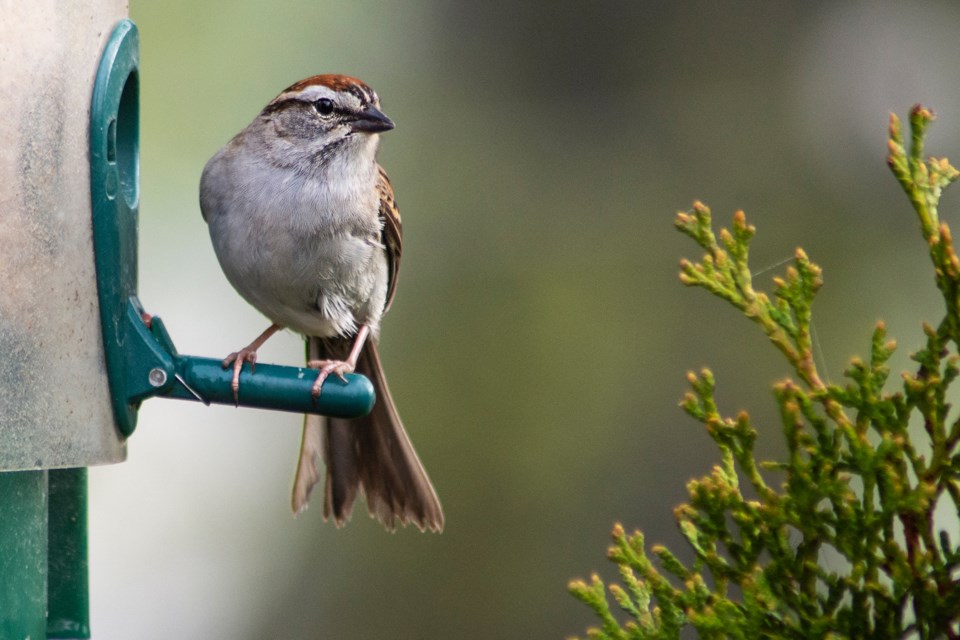Since the pandemic has forced Jon Vopni to stay home more, he's been enjoying the extra time to do some backyard birding.
This week, Vopni is sharing his photos and observations of three different sparrows.
*****
These photos were taken in my back yard in Collingwood. The Chipping, Song Sparrow and the White-crowned Sparrow are among the early springtime arrivals. The White-crowned seems to move on after the spring but the other two stay all summer.
The White Crown seems to only forage on the ground at the fallen seeds, I have never seen it land on the feeder. The other two land on the feeder and take their time to dine. My favourite is the Song Sparrow because of their beautiful song, which is similar to the goldfinch.
All descriptions and recordings here are from the Merlin Bird App and have helped me become a better bird watcher, I recommend the app to anyone who is interested in birds and bird watching. You can also get involved and donate to the Cornell Lab of Ornithology where the app comes from. Donations made will help protect birds.
The White-crowned sparrow has a long tail, a plain grey breast without streaks and a yellow or pink beak. It is always brighter than the white-throated sparrow. Adult White Crowns have a bold, black-and-white head pattern. Immature birds are browner. You can find them in brushy areas, hopping on the ground or in low shrubs.
The Chipping Sparrow is a slender sparrow with a short bill and a long, narrow tail. They have plan greyish breasts with a rust-coloured cap on their heads in breeding season. They are common in suburban areas, and seem to enjoy golf courses, parking lots, and areas with short trees and lots of grass. They can be mistaken with American Tree and Brewer's sparrows.
Song Sparrow is one of the most common sparrows. It's found in many habitats near and far from human developments, and its plumage differs geographically. Look for thick brown streaks on white breasts.
Happy birdwatching!
*****
